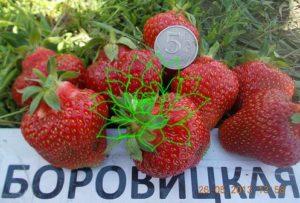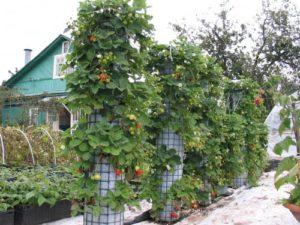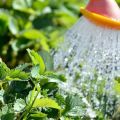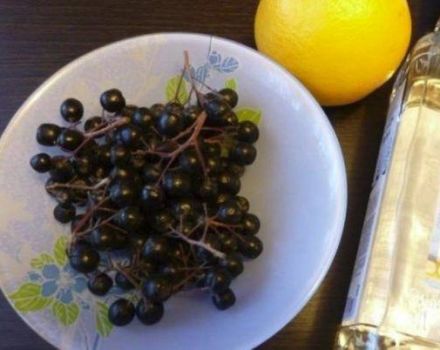How to plant and care for strawberries according to the Frigo method
When growing plants, farmers try to apply innovative methods and technologies that are aimed at increasing yields and improving the quality of fruits. Strawberries are no exception. There are many breeding methods for this crop. Growing strawberries in the Frigo way is considered an innovative technology that has many advantages.
Description and characteristics of Frigo strawberries
Translated from Italian, "frigo" means "cold". The technique of the same name involves the use of low temperatures. The main task of using this method is the ability to grow a plant all year round.
With the Frigo method, young plants are provided with a long rest period. This makes it possible to use the planting material at any time. Such conditions are created with the participation of cold.
Classification
There are several varieties of this technology. Each of them has certain features.
Class A
Crops from this category are used in small areas, since each plant forms only 2 peduncles. At the same time, it is possible to get the first fruits as early as 1 year after planting. 4 tons of berries can be harvested from 1 hectare. The diameter of the fruit neck is 12-15 millimeters.
Class A +
This is a fairly popular category, the fruits of which can be stored for a long period of time. If optimal conditions are created, 10 tons of fruits will be obtained from 1 hectare of plantings. The diameter of the neck of the berries is 15-18 millimeters. At the same time, they give 2-3 peduncles. Plants from this group are characterized by abundant flowering and high productivity. Therefore, they are used commercially.

Class A + extra
This category includes seedlings of the most expensive varieties of strawberries. Their yield reaches 20 tons per hectare. The diameter of the neck of such fruits is 20-24 millimeters. At the same time, up to 5 peduncles are formed on 1 bush. The berries appear on the main and lateral shoots. Already in 1 year of cultivation, 500 grams of fruit can be obtained from the bush.
Class B
This category includes varietal varieties of strawberries that differ significantly from previous varieties. All plants have only 1 peduncle. However, they bring a crop only 2 years after planting. At 1 year old, flower stalks are recommended to be cut from the bushes. The neck reaches 8-12 millimeters in diameter.Crops from this category are used for growing on small farms.
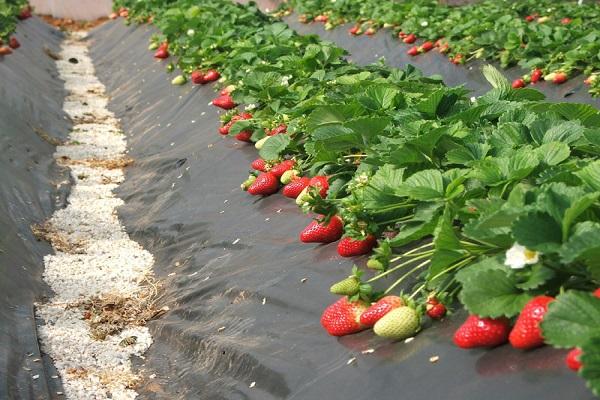
Pros and cons of the variety
The main advantages of this technology include the following:
- high yield parameters;
- ripening of fruits 8-9 weeks after planting;
- healthy planting material;
- excellent survival rate of seedlings;
- a large number of varieties;
- the ability to harvest all year round.
Moreover, the method has certain disadvantages:
- high cost of seedlings;
- the presence of early characteristics only in the first year.
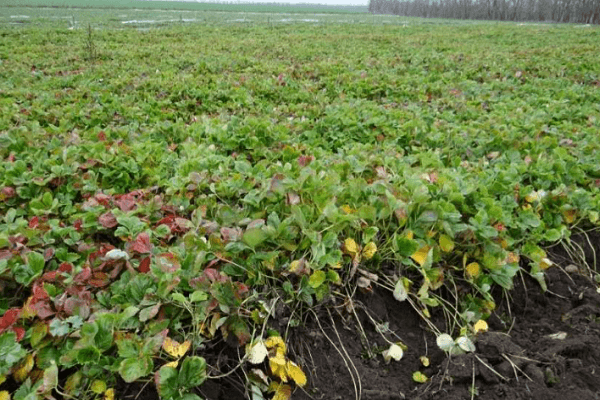
Features of growing a plant
To succeed in cultivating strawberries using this method, certain guidelines should be followed.
Landing dates
Packaged seedlings of such strawberries can be stored for a long time. After opening, the plant will have to be planted immediately. It is worth preparing the beds for the bushes in advance. They are placed in open ground from April to August.
When growing crops in closed ground, planting work is carried out for a whole year.
Seat selection and landing
It is recommended to plant strawberries using this method only on flat areas that are free of weeds. The formed beds should rise 20 centimeters above the ground. This will help to avoid flooding the roots with groundwater.
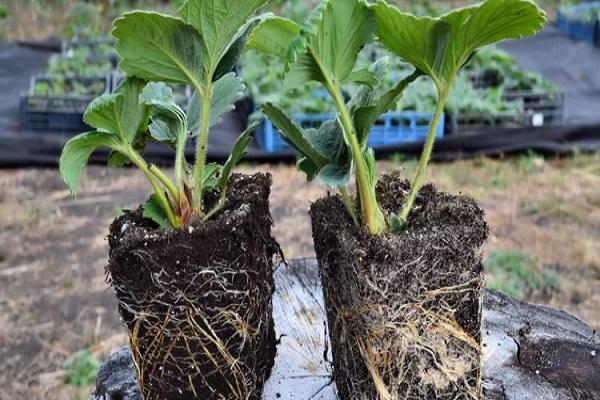
When planting strawberries, it is recommended to maintain an interval of 35 centimeters between bushes and 50 centimeters between rows. Deepening is recommended for a maximum of 15 centimeters.
When planting a crop in the ground, it is worth carefully straightening the root system. It is important to control the absence of tangled roots. The heart of the bushes should be above the ground surface. To keep the soil moist for a long time, it is recommended to cover it with a mulch layer.
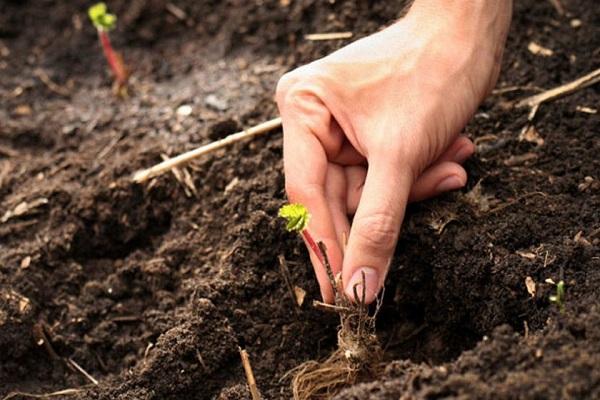
Crop Care Tips
In order for the strawberry to develop normally, it must be fully looked after.
Watering frequency
When growing a plant using this technology, it is important to sufficiently moisten the soil. Therefore, in the first 7-10 days, it is necessary to constantly water the beds. This is done every 4-5 days. During flowering and immediately after completion, the number of waterings is reduced to 1 time per week.
Fertilization
After top dressing, before planting, the next fertilization is carried out during the formation of ovaries. To do this, you should use urea, mixing 15 grams of the product with 10 liters of water.

After the completion of fruiting, it is recommended to remove the mulching layer, and apply 500-800 grams of complex fertilizer per 1 square meter under the bushes. It is permissible to use potassium sulfate instead.
Preparing for winter
To extend the period of laying flower buds and protect crops from frost, it is worth covering the plantings with perforated film or lutrasil. If you leave the insulation before flowering, it will be possible to increase the yield parameters and accelerate the ripening of the fruits.
Protection against diseases and pests
If agrotechnical recommendations are violated, strawberries can suffer from various diseases:
- Gray rot is a fungal infection that is accompanied by the appearance of brown spots on the fruit. To prevent the spread of the disease, the affected berries should be destroyed. Copper oxychloride will help cope with the disease.
- Brown, brown or white spot - with this disease, the leaves are covered with spots of the corresponding shade. Copper oxychloride helps to cope with pathology.
- Powdery mildew - This fungal infection causes damage to all aerial plant fragments. In this case, the damaged parts are covered with a white coating and begin to rot. Sulfaride helps to cope with pathology.
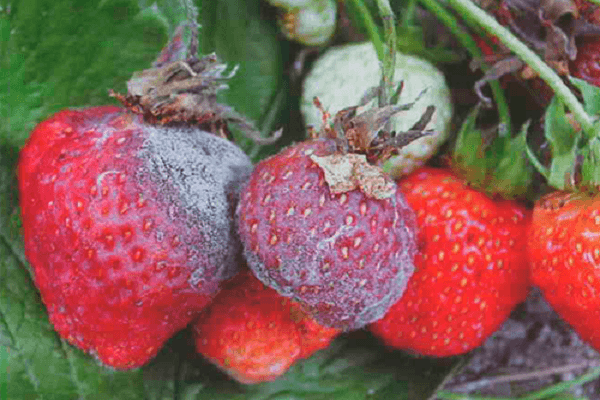
Also, strawberries can suffer from pest attacks. It is susceptible to attacks by slugs, millipedes and snails.
In case of serious damage to the bushes, it is worth using Metaldehyde.It is placed on the surface of the soil after harvesting the fruit. It is best to carry out the procedure at the end of September.
Collection and storage of strawberry harvest
The harvest period is determined by the crop variety. The first fruits can be obtained 8-10 weeks after planting the bushes. Then they need to be watered again and wait for the next fruiting.
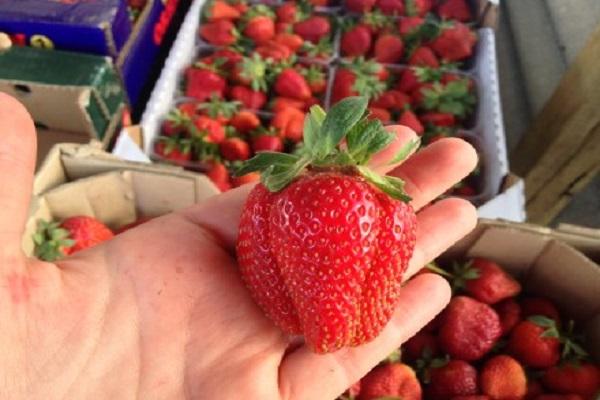
It is recommended to remove the berries from the bushes with stalks and carefully put them in boxes. It is permissible to store them in a cool place for several weeks without losing taste and external characteristics. If there is a need for longer storage, the fruits are frozen or made into blanks.
Berries are actively used to make jam, jam, compote, jelly.
The use of Frigo technology for strawberry cultivation has a number of advantages. This method allows for a bountiful harvest at any time of the year. At the same time, the bushes need full and high-quality care.
